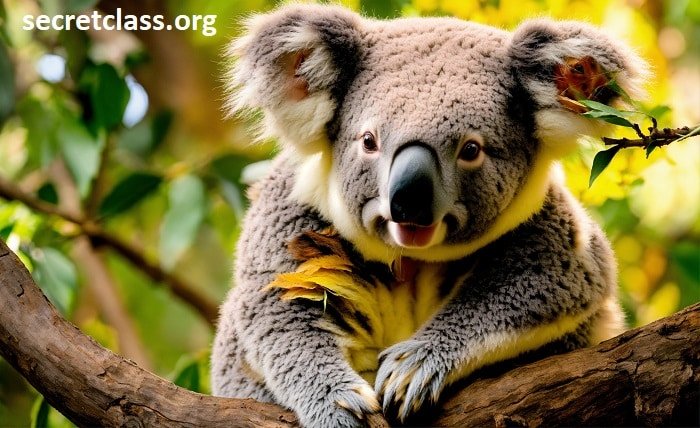Koalas: A Comprehensive Guide to Australia’s Iconic Marsupial

Koalas are one of Australia’s most beloved and iconic marsupials. Known for their distinctive appearance and gentle demeanor, these fascinating creatures have captured the hearts of many. In this comprehensive guide, we will delve into the world of koalas, exploring their habitat, diet, behavior, and the conservation challenges they face. Understanding the life of koalas provides valuable insight into the efforts needed to protect these unique animals and their natural environment.
The Natural Habitat of Koalas
The natural habitat of koalas is primarily the eucalyptus forests of eastern Australia. These marsupials are arboreal, meaning they spend most of their lives in trees. Koalas are highly specialized to their habitat, relying on eucalyptus leaves as their main source of food. The distribution of koalas is closely tied to the availability of suitable eucalyptus forests, which provide both food and shelter for these animals.
What Do Koalas Eat?
The diet of koalas consists almost exclusively of eucalyptus leaves. These leaves are low in nutrients and high in fiber, which requires koalas to consume large quantities to meet their nutritional needs. Koalas are highly selective feeders, choosing specific eucalyptus species and leaves at different stages of maturity. This specialized diet plays a significant role in their ecological niche, as koalas help shape the structure of their forest habitat through their feeding habits.
The Behavior of Koalas
Koalas are known for their unique behavior patterns. They are mostly solitary animals, with each koala having its own home range within the eucalyptus forest. They spend a significant portion of their day sleeping, often up to 18 hours, due to their low-energy diet. During their waking hours, koalas are primarily active in the early morning and late afternoon. Their behavior includes vocalizations for communication, particularly during mating season, and grooming to maintain their fur.
Reproduction and Life Cycle of Koalas
The reproductive cycle of koalas is marked by a specific breeding season, typically from September to March. Female koalas give birth to a single joey after a gestation period of about 35 days. The tiny, underdeveloped joey crawls into the mother’s pouch, where it continues to develop for several months. After leaving the pouch, the joey clings to the mother’s back and gradually begins to eat eucalyptus leaves. The life cycle of koalas involves several stages, from infancy to adulthood, each with distinct developmental milestones.
Koalas and Their Role in the Ecosystem
Koalas play a crucial role in their ecosystem. By feeding on eucalyptus leaves, they help control the growth of these trees and maintain the balance of their habitat. Their feeding habits can influence the composition of plant species and the structure of the forest. Additionally, koalas serve as an important food source for some predators and contribute to the biodiversity of their environment. Understanding the role of koalas highlights their significance in maintaining the health and stability of their ecosystem.
Conservation Status of Koalas
The conservation status of koalas has been a growing concern due to habitat loss, disease, and climate change. Urban expansion, deforestation, and bushfires have significantly impacted koala populations, leading to a decline in their numbers. Chlamydia, a bacterial infection, also poses a major threat to their health and reproduction. Conservation efforts are focused on habitat protection, disease management, and public awareness to ensure the survival of koalas. Organizations and government bodies are working together to address these challenges and support the conservation of this iconic species.
Efforts to Protect Koalas
Various initiatives are in place to protect koalas and their habitats. Conservation programs aim to preserve and restore eucalyptus forests, implement disease management strategies, and support research on koala populations. Community involvement is also crucial, with many organizations working to raise awareness and encourage responsible environmental practices. Additionally, wildlife corridors and protected areas are established to provide safe habitats for koalas and facilitate their movement between different forest areas.
How You Can Help Koalas
Individuals can contribute to koala conservation in several ways. Supporting organizations that work on koala conservation, participating in local environmental initiatives, and advocating for policies that protect wildlife are effective ways to make a difference. Additionally, practicing responsible land use and minimizing habitat destruction can help preserve the natural environment of koalas. Every action counts in the collective effort to ensure the survival of these remarkable marsupials.
The Future of Koalas
The future of koalas depends on continued conservation efforts and effective management strategies. Addressing the challenges of habitat loss, disease, and climate change is essential for the long-term survival of this species. Ongoing research and public awareness are crucial in supporting these efforts. By working together, we can help secure a future where koalas continue to thrive in their natural habitat and remain a cherished part of Australia’s wildlife.
Conclusion
Koalas are more than just adorable creatures; they are a vital part of Australia’s ecosystem with a unique lifestyle and significant conservation needs. Understanding the life of koalas, from their habitat and diet to their role in the environment and the challenges they face, helps highlight the importance of protecting these remarkable marsupials. By supporting conservation efforts and making informed choices, we can all contribute to ensuring a future where koalas continue to thrive and enrich the biodiversity of their native habitat.
FAQ
1. Are koalas marsupials?
Yes, koalas are marsupials. They are native to Australia and are known for their unique reproductive system, which includes carrying their young in a pouch.
2. How long do koalas live in the wild?
In the wild, koalas typically live for about 10 to 12 years. Their lifespan can be affected by factors such as habitat quality, disease, and predation.
3. What is the primary threat to koalas?
The primary threats to koalas include habitat loss due to deforestation and urbanization, disease such as chlamydia, and climate change, which can lead to extreme weather events and habitat destruction.
4. How can I support koala conservation?
You can support koala conservation by donating to wildlife organizations, participating in local environmental initiatives, and advocating for policies that protect natural habitats. Additionally, spreading awareness about koalas and their conservation needs can make a significant impact.
5. Do koalas have any natural predators?
Koalas have few natural predators, but they can be vulnerable to large birds of prey and sometimes domestic dogs. Their main threats come from environmental and human-induced factors rather than natural predators.





